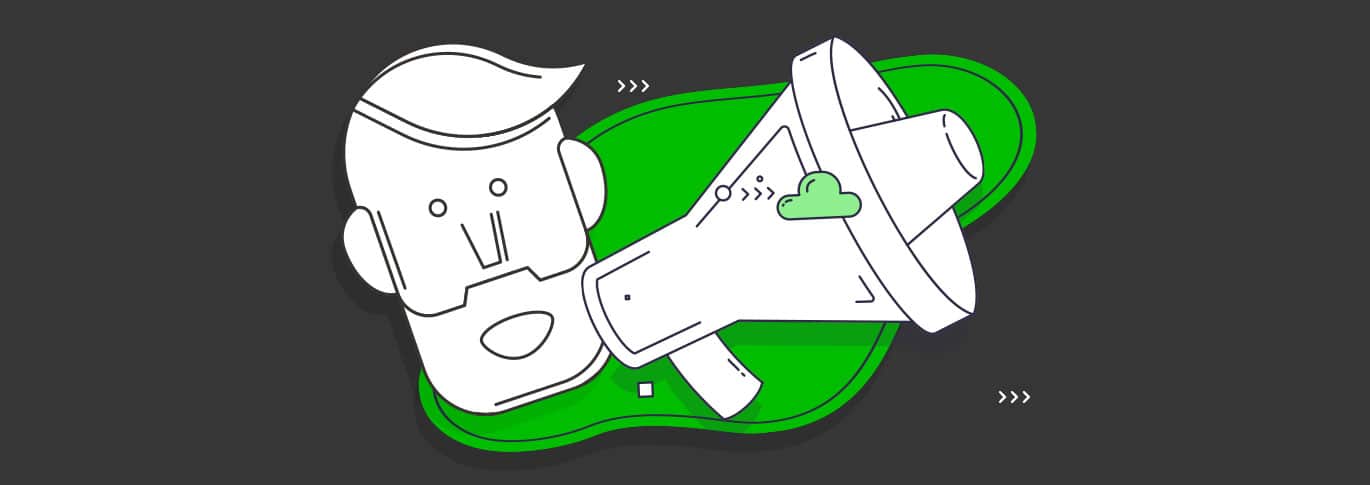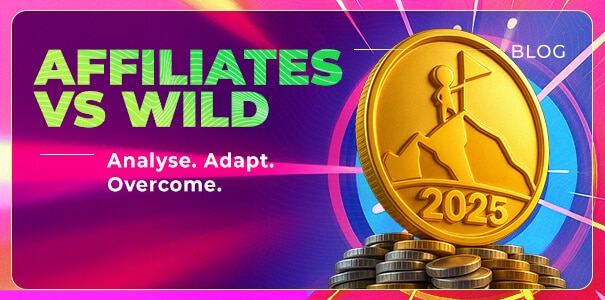Let’s say you want to sell your new gardening eBook that you’ve just finished. You’ve spent countless hours researching, writing and editing: it’s finally ready for you to share your hard work with the world.
Between the two marketing strategies at your disposal below, which would you be more inclined to choose? (Hint: Your goal is to get as many sales as possible).
- I’d send an email blast to notify my subscribers about the eBook
- I’d advertise my new eBook by blogging about it
Don’t read too much into it, both are valid strategies. However, they’re also very different in how you approach your potential clients.
In case it wasn’t made obvious from the blog’s title, we’re pitting direct marketing against indirect marketing (in that order).
Which angle you choose depends entirely on your profile as an online marketer. Before talking about advantages and disadvantages from both sides, we need to properly define the concepts at hand.
Direct Marketing: The Hare
Direct Marketing is you promoting a product or service without the use of any intermediary channels. The goal is to persuade your potential customers to take action. You want results, and you want them fast! In our example above, it could be an email asking readers to click on a Call-to-Action (CTA) to buy our eBook.
Indirect Marketing: The Tortoise
Indirect Marketing is less in-your-face. It’s passive. It’s slow. Your goal remains to sell the eBook, but you won’t be all that upfront about it. You might write a couple blog posts about gardening to give your audience added value while ranking for relevant keywords in the search engines. People will be more inclined to buy from you because you didn’t try to shove your eBook down their throat.
Pros & Cons of Running with Direct Marketing
Direct marketing is one of the most widespread strategies used in business. Here’s why it works but also why you might consider its indirect alternative.
Pros
- You can pinpoint specific segments and connect with people that are already interested in your product or service, making this very cost-effective.
- You get to build a closer relationship with your customers, take their pulse and modify your marketing efforts accordingly. This goes a long way to build trust and loyalty.
- You can create personalized messages so the communication feels more legitimate between you and the recipient.
- Easier and better tracking of your campaigns with measurable data (such as response rate).
- Higher Return on Investment (ROI) since you’re targeting people who already show interest in your product or service.
- Doesn't require a strong brand to begin with.
Cons
- You’re walking on a thin line in regards to privacy. You must ensure your marketing strategy doesn’t fall into the SPAM territory.
- You have laser-like focus. This is great for accuracy, but bad for your overall reach.
- The marketing costs can ramp up significantly if for instance you’re using large-scale email blasts or Pay-per-click (PPC) ads in competitive niches.
Most people are fed up with this marketing strategy as 56.63% of mail traffic is spam, meaning your message can be ignored more easily.
Pros & Cons of Taking it Slow with Indirect Marketing
Indirect marketing is a great choice if you’re willing to invest ressources into content creation. — blogging and social media included.
Pros
- It’s a softer approach to marketing that doesn’t feel predatory and gives potential customers added value via blogging or through social posts.
- It’s usually much more inexpensive in contrast with direct marketing, as long as you’re able to create your own content without outsourcing it.
- You’re building brand awareness through your own content.
Cons
- Since you cast a wider net, you’re never quite sure what you’ll catch in the sea of advertising — making it more difficult to track your campaigns.
- Lower profit margins since you’re using a third-party to convey your message / sell your product.
- It’s a long-term strategy that won’t yield results overnight. It might be frustrating to not see results quickly as your marketing strategy is built over time.
- It requires constant upkeep to keep your audience engaged.
Direct Vs. Indirect Marketing: Some Examples
Choosing between these two marketing strategies depends on your style and goals. Below, you’ll find some common forms they can take.
Direct Marketing Examples
- Email marketing
- Online advertising such as Display Ads
- Phone calls
- SMS/MMS
- Push Notifications
- Telemarketing
Indirect Marketing Examples
- Newsletters
- Blogs
- Tradeshows
- Press Releases
- eBooks
At first glance, it might be weird to consider email marketing different than Newsletters. After all, both have to do with emails, right? While true ... both can be used a little differently to complete various objectives.
Newsletters are a powerful indirect marketing tool when used adequately. They should offer interesting information to your readers and not sound like a thinly veiled sales pitch. This will help build your credibility and make your prospects think about you. Always try to put yourself in the shoes of the recipients: would you subscribe to that newsletter? Does it read like a giant-sized advertisement?
On the other hand, email marketing doesn’t really care if there’s additional value for the recipients — it’s purely transactional.
Your goal is to get a lead or conversion, no matter what.
In that sense, it’s pretty close to cold calling.
That’s not to say email marketing and newsletters shouldn’t coexist. In fact, newsletters help drive your credibility and brand loyalty, thus making recipients more willing to open your other, “less valuable” emails in the first place.
It’s a win-win relationship, as long as you understand that these strategies serve a different — yet intertwined — purpose.
Direct Marketing + Indirect Marketing = Success!
Even after you’ve weighed the pros and cons of our two aforementioned marketing strategies, you might still be a bit confused as to which one you should prioritize.
After all, they both have their own merits and limitations.
To what we respond:

Really, you’ll want to use direct marketing in conjunction with indirect marketing for the best results. They work perfectly together.
In the case of our gardening eBook, that could hinge on creating blog posts and a quality newsletter about the ins and outs of this practice. We would slowly gain subscribers to our mailing list through the blog. Only then we would send an email to buy the eBook — to people who have already shown keen interest in the topic.
The direct impact of using both marketing strategies together is an increase in market share. It’s really the best of both worlds. You’ll need to deploy more efforts and time, but in the end this is always the most profitable thing to do.
Don’t be short-sighted, but don’t bite off more than you can handle either.
You’ll want to strike a balance between the two approaches.
What the Future of Marketing Looks Like
It’s always fun to imagine how a specific field or area of interest will evolve over the next few years.
Sometimes, we feel like marketing is a bit cyclical, just like fashion. We were bamboozled by direct mail at home making a comeback — with a 4.4% response rate vs 0.12% for email. Mix that strategy with Augmented/Virtual Reality and the possibilities become quite interesting.
The focus on mobile will only continue to grow, just like the amount of connected devices.
Native advertising will be one of the biggest ad revenue generators by 2020 — already expected to be a $21 billion industry in 2018!
After the big social media stars and their millions of followers, we could see a rise in micro-influencers: marketing through the lenses of popular people in specific niches. This is very interesting because it means more focused marketing with a very dedicated following.
One thing’s for sure: direct & indirect marketing are here to stay.
Let us know about your preferred marketing strategies below!



